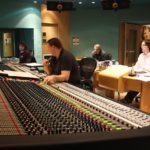Commissioned to commemorate the International Year of Astronomy in 2009, ‘400 Years of the Telescope‘ is an engaging documentary film celebrating the rich history of telescope usage. Crafted by Interstellar Media Productions and backed by the National Science Foundation, it successfully reached a widespread audience through its PBS broadcasts. Insights spanning four centuries come to life as viewers are taken on an enlightening journey that replicates Galileo’s first skyward glance using a spyglass.
Accompanying this documentary is a captivating planetarium film, titled ‘Two Small Pieces of Glass.’ It boasts the record of being the ‘most frequently screened planetarium film worldwide’ for an unparalleled three years straight.
The creators of ‘400 Years of The Telescope’ not only revisited history but also reimagined it through modern technological lens. As one of the pioneers in utilizing the 4K resolution, the film divulged the first-rate potential of the cutting-edge RED camera. This groundbreaking integration of advanced technology in the narrative earned the film esteemed awards, thereby reaffirming its merit in the realm of technical innovation.
Pushing Boundaries: The Use of 4K and the RED Camera in Filmmaking
When it comes to pushing the envelope in terms of visuals, the documentary 400 Years of the Telescope stands in a league of its own. The film is more than a simple documentary – it’s a pioneer in leveraging 4K technology and the illustrious RED camera, setting astounding standards in cinematic brilliance.
The narrative unfolds in breathtaking 4K clarity, whisking the viewers off to observatories located in some of the most inaccessible and harsh environments across the world, truly testing the mettle of both the equipment and the production crew.

Music to the Ears: Mark Slater’s Score and The London Symphony Orchestra
With Mark Slater at the helm as the composer, and the iconic Abbey Road Studios serving as the recording venue, the London Symphony Orchestra brought the film’s music score to life.
You may wonder how music affects a documentary film. The answer is simple – a captivating score not only underscores the narrative, but it also tugs at viewers’ emotions, making the story more immersive and indelible. When Slater’s skills combined with the symphony’s elegance, a musical landscape was created that was as mesmerizing as the celestial bodies the documentary brings into focus. Every beat, every note, played a part in illustrating the 400-year-long journey of the telescope.
Recorded at the legendary Abbey Road Studios, the score benefited greatly from the historical and acoustic richness of the venue. Synonymous with excellence in music, the studio added an extra layer of auditory majesty. This iconic location, coupled with the mastery of the London Symphony Orchestra, ensured a sonically splendid journey through the cosmos.
Let’s not forget the exceptional narrator of the documentary – none other than the renowned astrophysicist Neil DeGrasse Tyson. His eloquent articulation and profound understanding of the universe added extraordinary depth to the narrative. With Tyson’s commanding voice guiding us, we journeyed effortlessly across the cosmos, from the earliest rudimentary telescopes to the newest cutting-edge technology.
Critically Acclaimed: The Awards and Recognitions for 400 Years of the Telescope
Unsurprisingly, this documentary, which combined illuminating science with stunning visual innovation, garnered much praise and a slew of awards from various circles. From the pioneering technology to the captivating storytelling, both critics and audiences saw the film as a stand-out piece of work.
Upon its release in 2009, 400 Years of the Telescope instantly drew attention not only for its poignant narrative, narrated by the well-known astrophysicist Neil DeGrasse Tyson, but also for its cutting-edge filming technique. It was one of the first films to use the RED camera and be shot in 4K, a move that hailed a new era of cinematic representation for scientific documentaries. This innovative use of technology earned the film numerous accolades for technical innovation.
It’s worth noting some of the significant awards and recognition that 400 Years of the Telescope received. Let’s take a look:
- Technical Innovation Award from the International Film Festival for its groundbreaking use of 4K resolution and the RED camera.
- Best Documentary Award at the Science Film Festival, acknowledging its contribution to making complex scientific content accessible to a wide range of audiences.
- Viewer’s Choice Award from the Public Broadcasting Service (PBS), an indication of the film’s popularity among a broad viewer base.
Moreover, the planetarium film Two Small Pieces of Glass, which was a companion to the main documentary, also enjoyed massive success. It was the most played film in the planetarium world for not one, not two, but three years in a row!
In summary, the 400 Years of the Telescope doesn’t just share the journey of the telescope, it itself has been on an incredible journey since its release. Scooping various awards and recognition for its technical prowess, informative narrative, and engaging format, it’s clear to see why this documentary is still talked about today with such high regard. And let’s not forget the beautiful score, composed by Mark Slater and performed by the London Symphony Orchestra, that added an extra layer of magic to the entire piece.



Pingback: Recording at Abbey Road with the London Symphony Orchestra - Mark Slater
Pingback: Two Small Pieces of Glass: The Amazing Telescope - Mark Slater